Whether you’re planting a full self-sufficiency garden or just making the most of a sunny windowsill, growing herbs is one of the simplest, most rewarding ways to begin producing your own food. Herbs are fast-growing, take up minimal space, and don’t need much more than good light, decent drainage, and a bit of care. Best of all, they’re practical – fresh herbs instantly lift home-cooked meals and can be preserved for use year-round.
For beginners in Australia, some herbs are far easier to grow than others. The following list includes herbs that are low-maintenance, forgiving with water and sun conditions, and suited to a wide range of climates – from temperate backyards to subtropical balconies.This article covers the 12 easiest herbs to grow at home in Australia, even if you’re short on space, time, or gardening experience. Whether you live in Sydney, Brisbane, Perth, or a rural block with full sun, these herbs are excellent choices.
What Makes a Herb “Easy” to Grow?
Before we dive into the list, it’s worth understanding what makes a herb beginner-friendly. The herbs featured here share a few key characteristics:
- Fast-growing: You’ll see results quickly, often within a few weeks.
- Low maintenance: They don’t require constant watering or feeding.
- Pest tolerant: While no plant is immune, these herbs tend to avoid major issues.
- Adaptable: They’ll do well in pots, raised beds, or the ground.
- Useful: You’ll actually use them in daily cooking or home remedies.
Let’s jump into the easiest herbs to grow at home across Australia.
1. Basil (Ocimum basilicum)
Best for: Warm climates (spring and summer growing)
Where to grow: Pots, garden beds, windowsills with full sun
Ideal uses: Pesto, salads, pasta sauces, herbal teas
Basil is one of the most rewarding herbs to grow. It thrives in warm conditions, loves full sun (6+ hours), and grows rapidly from seed. Regular harvesting actually encourages bushier growth – just pinch off the top leaves, and the plant will double down.
In most parts of Australia, basil is grown as a warm-season annual, but in tropical or frost-free areas, it can become a short-lived perennial. It does best in rich, well-drained soil and needs consistent moisture – but not waterlogged roots.
Pro tip: Basil bolts quickly in hot weather, so harvest frequently and consider growing a few staggered batches through spring and summer.
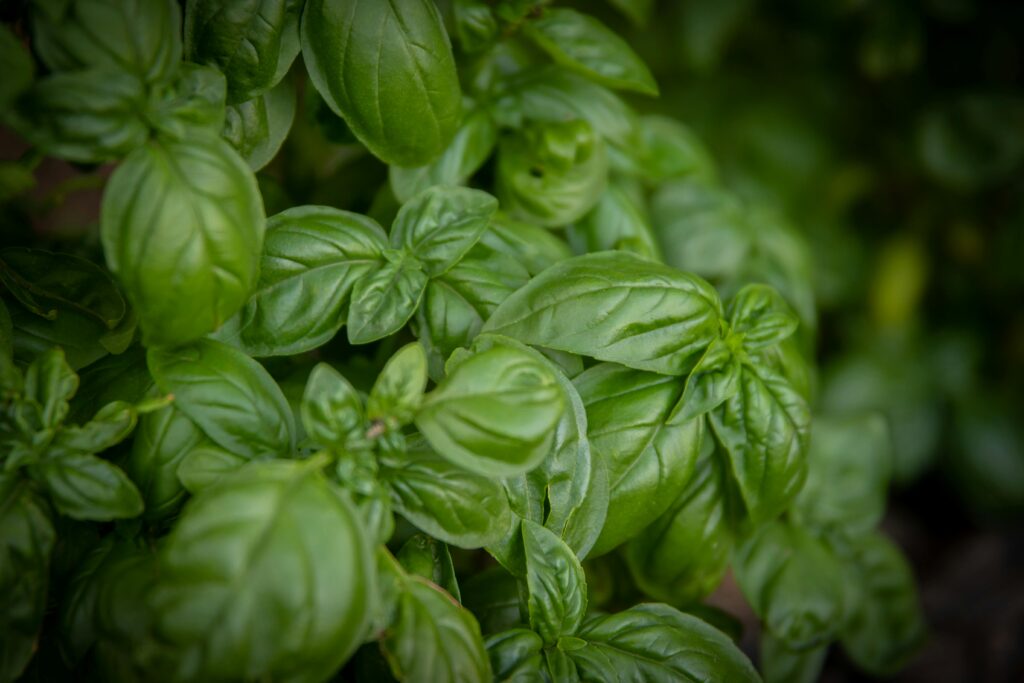
2. Mint (Mentha spp.)
Best for: Almost every climate
Where to grow: Pots (highly recommended), semi-shade to full sun
Ideal uses: Herbal teas, desserts, marinades, digestive remedies
If you want a foolproof herb, mint is it. It’s practically unkillable – so much so that it’s invasive in garden beds. Always plant mint in containers to keep it from spreading uncontrollably.
Mint loves regular water and a touch of shade in hotter regions. It will grow from cuttings or runners, so sharing or propagating is easy. You can harvest it often – in fact, cutting it back promotes fresh, flavourful new leaves.
Pro tip: For ongoing supply, keep one pot growing in shade and another in partial sun to stagger growth cycles.
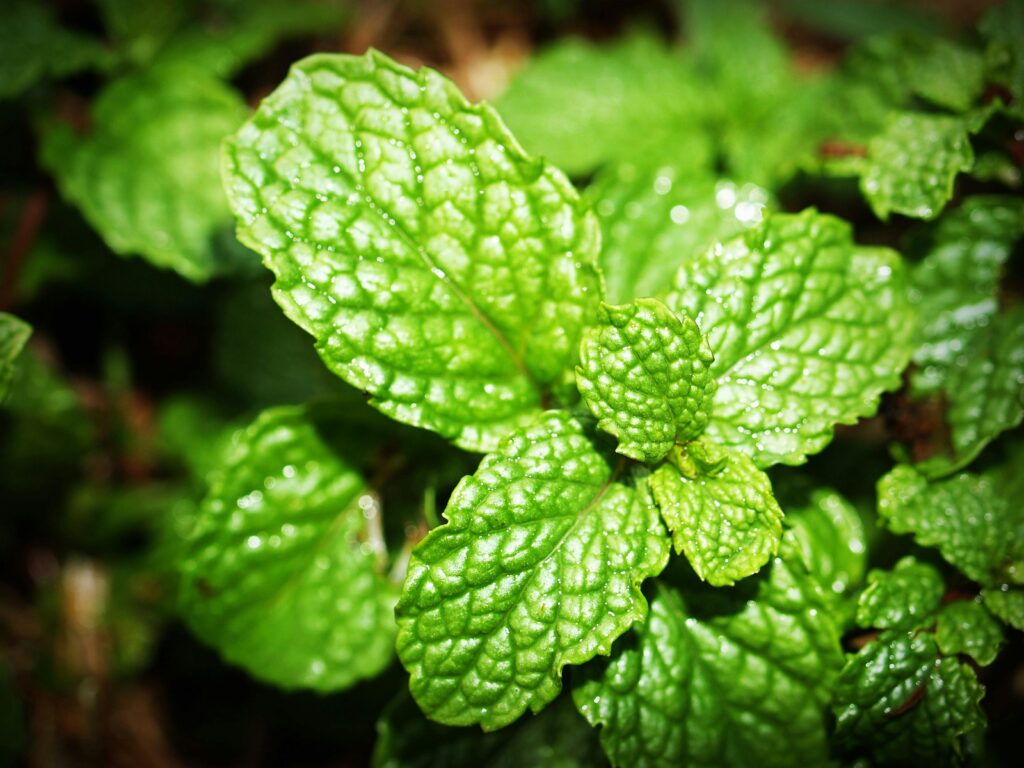
3. Parsley (Petroselinum crispum or neapolitanum)
Best for: Cooler months in warmer regions, all year in temperate zones
Where to grow: Pots, raised beds, or in-ground
Ideal uses: Garnishes, salads, tabbouleh, stews
Flat-leaf or curly, parsley is a biennial herb grown as an annual for fresh foliage. It takes a little longer to germinate (up to 3 weeks), but once established, it’s resilient, especially in cooler seasons. Parsley prefers well-drained, moist soil and tolerates part shade – making it excellent for balconies or under taller plants.
It pairs beautifully with tomatoes and onions in companion planting and is a nutrient powerhouse rich in vitamin C and iron.
Pro tip: Let a few plants go to seed in their second year – you’ll get a free patch of self-sown parsley in autumn.
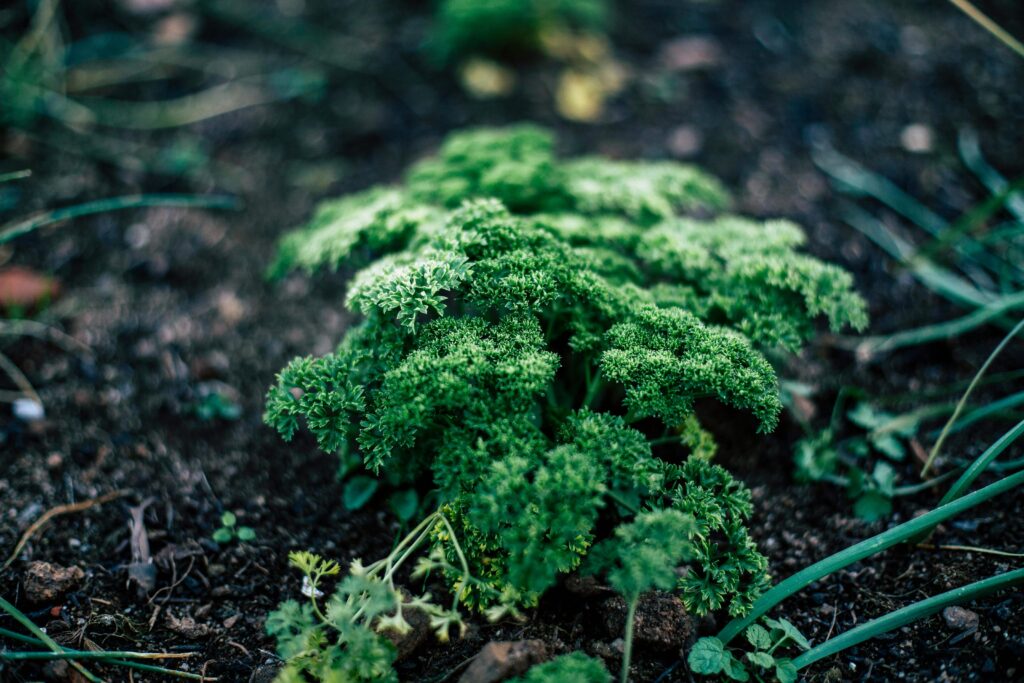
4. Chives (Allium schoenoprasum)
Best for: Most climates, frost-tolerant
Where to grow: Pots, garden beds, along borders
Ideal uses: Omelettes, salads, soups, dips
Chives are a compact, clumping perennial herb in the onion family. They require minimal space and will come back year after year with very little care. Snip them regularly (just above the soil line) and they’ll regrow quickly.
They prefer full sun but tolerate part shade. Plus, their purple blooms in spring are not only beautiful but also attract pollinators like bees.
Pro tip: Use scissors to harvest – pulling can dislodge the whole plant.
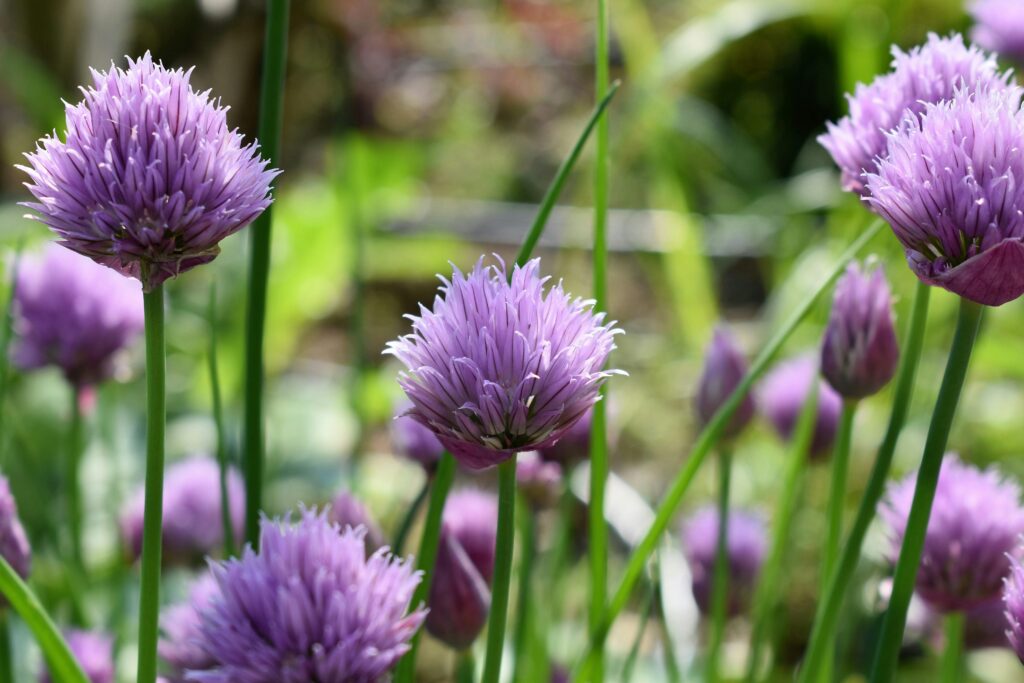
5. Thyme (Thymus vulgaris)
Best for: Dry, sunny conditions
Where to grow: Raised beds, rock gardens, or containers
Ideal uses: Roasts, soups, stews, herbal infusions
Thyme is a drought-tolerant Mediterranean herb that thrives in well-drained soil and full sun. It doesn’t need rich soil – in fact, lean soil encourages stronger flavour. Once established, thyme is low maintenance and evergreen in most Australian climates.
It’s great as a ground cover or edging plant and pairs well with rosemary and oregano. Regular harvesting encourages compact growth.
Pro tip: Avoid overwatering. Thyme hates soggy roots and is best watered deeply but infrequently.
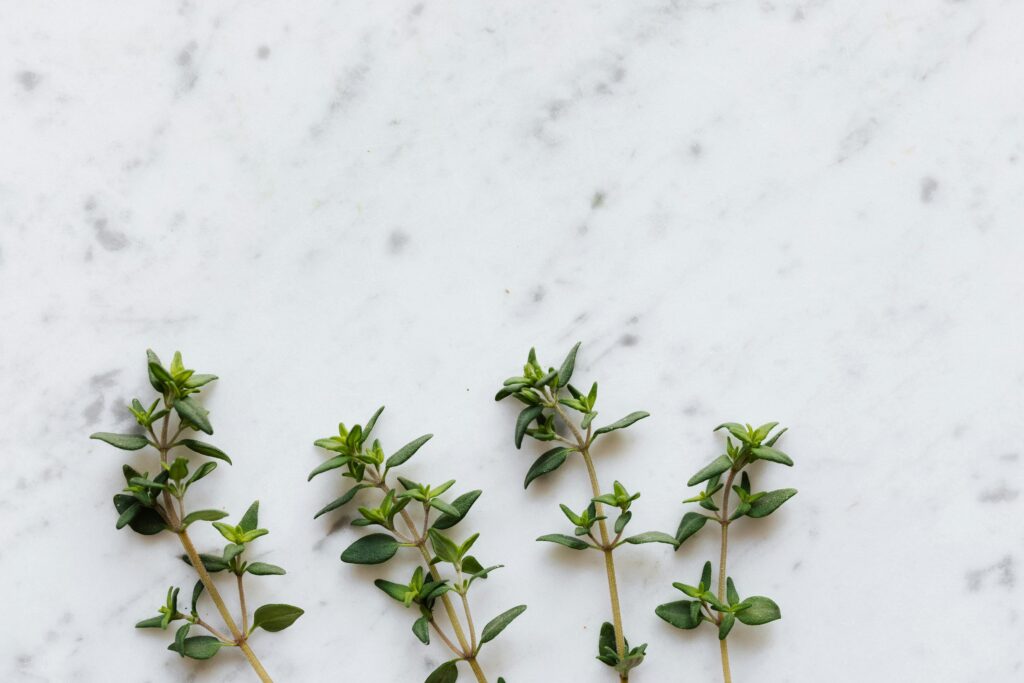
6. Oregano (Origanum vulgare)
Best for: Warm to temperate zones
Where to grow: Pots, garden beds, balcony boxes
Ideal uses: Pizza, pasta, Greek dishes, marinades
Like thyme, oregano is a sun-lover that thrives in poor, dry soils. It’s ideal for low-maintenance gardens and produces strongly aromatic leaves. Grow it in a container to manage spread, as it can take over space quickly.
Prune regularly to avoid legginess and promote bushy growth. It’s best used fresh during the warmer months or dried for use through winter.
Pro tip: Harvest in the morning after dew has dried for the most potent flavour.
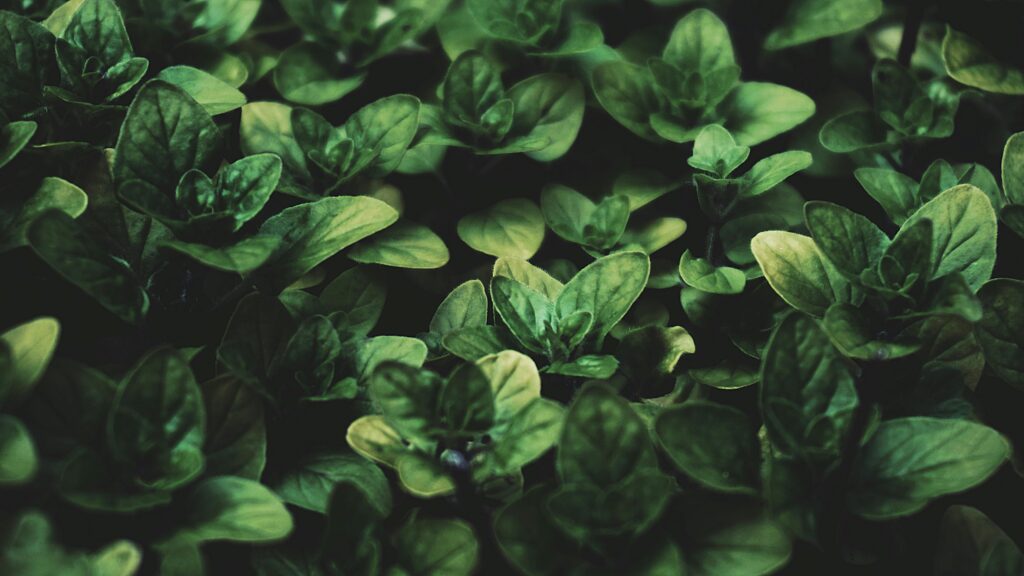
7. Coriander (Coriandrum sativum)
Best for: Autumn and spring in most climates
Where to grow: Pots or garden beds in part sun
Ideal uses: Curries, Mexican food, Asian dishes, chutneys
Coriander is a cool-season herb that bolts quickly in hot weather. It prefers light shade in summer and well-draining soil. Sow directly, as it doesn’t transplant well, and harvest the leaves while young and tender.
Interestingly, both the leaves (coriander) and seeds (coriander spice) are edible, offering multiple uses from one crop.
Pro tip: Sow fortnightly in autumn and spring for a rolling supply and avoid planting in the peak of summer.

8. Rosemary (Rosmarinus officinalis)
Best for: Mediterranean and dry inland areas
Where to grow: Full sun, in the ground or large pots
Ideal uses: Roasts, breads, stews, essential oils
This woody-stemmed perennial thrives in hot, dry climates and poor soils. Once established, it can live for decades with minimal care. Rosemary is ideal for hedging, topiary, or as a border plant.
It flowers in late winter to spring and attracts bees while deterring pests like aphids. Trim it after flowering to keep it neat.
Pro tip: Avoid overwatering – rosemary is drought-resistant and thrives on neglect once mature.

9. Sage (Salvia officinalis)
Best for: Temperate climates with low humidity
Where to grow: Full sun in raised beds or pots
Ideal uses: Stuffing, meat dishes, herbal teas
Sage loves full sun and well-drained soil, especially in cooler, less humid areas. It dislikes tropical humidity and wet roots, so in wet areas, pots with good drainage are best.
It’s a beautiful plant with soft, grey-green leaves and purple flowers. Clip it back after flowering to maintain shape and promote new growth.
Pro tip: Use sparingly in cooking – a little sage goes a long way.

10. Lemongrass (Cymbopogon citratus)
Best for: Tropical to warm temperate zones
Where to grow: Large pots, garden beds with full sun
Ideal uses: Stir-fries, curries, herbal teas
Lemongrass is a clumping perennial that prefers heat, sun, and moisture. It requires a bit more space than other herbs, but the stalks and leaves can be harvested continuously throughout the growing season.
Plant it in spring once the risk of frost has passed. It’s also a good companion plant for deterring mosquitoes.
Pro tip: Cut stalks at the base and use only the white, tender portion in cooking.
11. Bay Laurel (Laurus nobilis)
Best for: Mediterranean-style climates
Where to grow: Large pots or in-ground with room to grow
Ideal uses: Soups, stews, sauces, stocks
Bay is a slow-growing evergreen shrub or small tree. Its aromatic leaves are used to flavour long-simmered dishes. It prefers full sun but tolerates some shade. In containers, it stays compact and manageable with light pruning.
This is a long-term herb investment – once mature, a single tree can supply fresh bay leaves for life.
Pro tip: Fresh bay leaves have a milder flavour – dry a few to intensify aroma in cooking.

12. Chilli (Capsicum spp.)
Best for: Warm-season growing (spring to autumn)
Where to grow: Pots, raised beds, sunny spots
Ideal uses: Hot sauces, stir-fries, salsas, drying
While technically a fruiting plant, chillies are often grown like herbs. They’re compact, productive, and spice up any home garden. Choose varieties that suit your climate – bird’s eye chillies for hotter zones, jalapeños for temperate areas.
They need heat and full sun to thrive. Feed with seaweed or compost and keep them well-watered through fruiting.
Pro tip: The more you harvest, the more they produce. Pick often once fruit is mature.
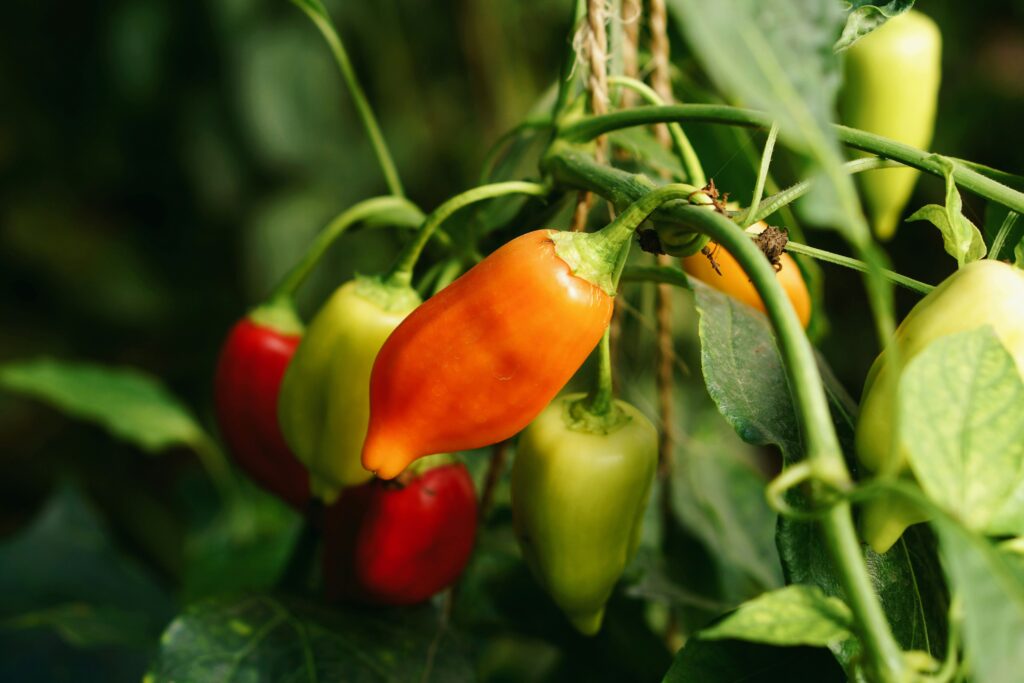
Final Thoughts
Growing your own herbs at home is not only cost-effective and flavour-enhancing – it’s one of the simplest ways to become more self-sufficient. These 12 herbs are beginner-friendly, climate-adaptable, and suitable for everything from inner-city balconies to sprawling backyard gardens.
Start with just three or four that match your climate and cooking style, and grow your collection from there. With the right setup, you’ll be drying, freezing, and gifting home-grown herbs in no time.


